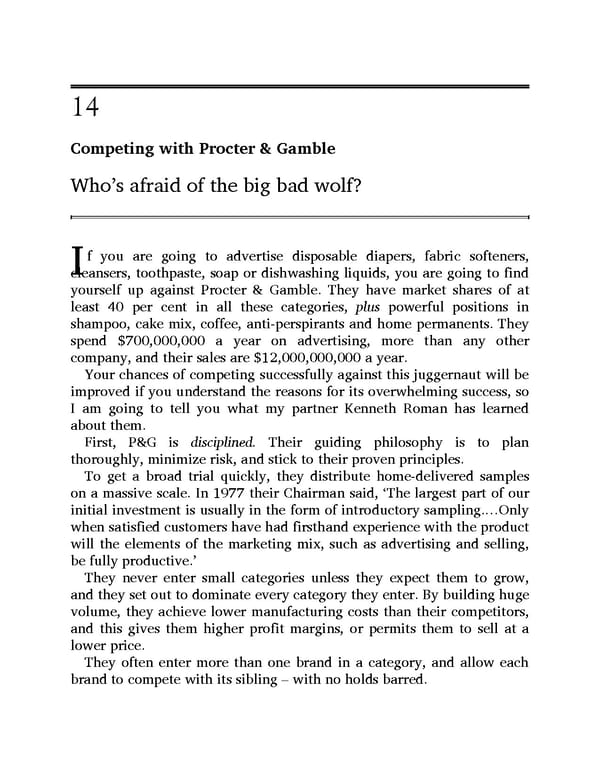1 4 Competing with Procter & Gamble Who’s afraid of the big bad wolf? f you are going to advertise disposable diapers, fabric softeners, I cleansers, toothpaste, soap or dishwashing liquids, you are going to find yourself up against Procter & Gamble. They have market shares of at least 40 per cent in all these categories, plus powerful positions in shampoo, cake mix, coffee, anti-perspirants and home permanents. They spend $700,000,000 a year on advertising, more than any other company, and their sales are $12,000,000,000 a year. Your chances of competing successfully against this juggernaut will be improved if you understand the reasons for its overwhelming success, so I am going to tell you what my partner Kenneth Roman has learned about them. First, P&G is disciplined. Their guiding philosophy is to plan thoroughly, minimize risk, and stick to their proven principles. To get a broad trial quickly, they distribute home-delivered samples on a massive scale. In 1977 their Chairman said, ‘The largest part of our initial investment is usually in the form of introductory sampling.…Only when satisfied customers have had firsthand experience with the product will the elements of the marketing mix, such as advertising and selling, be fully productive.’ They never enter small categories unless they expect them to grow, and they set out to dominate every category they enter. By building huge volume, they achieve lower manufacturing costs than their competitors, and this gives them higher profit margins, or permits them to sell at a lower price. They often enter more than one brand in a category, and allow each brand to compete with its sibling – with no holds barred.
 Ogilvy on Advertising Page 221 Page 223
Ogilvy on Advertising Page 221 Page 223